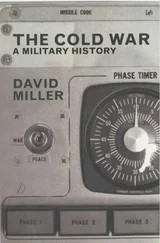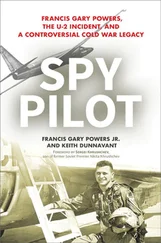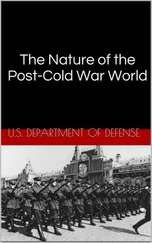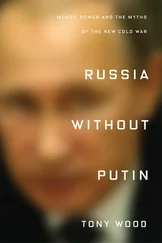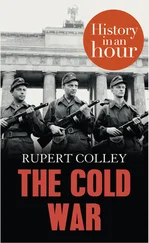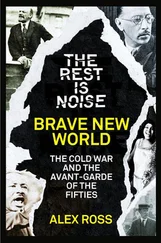As issuance passed the $1 billion mark in 1967, the US announced further measures to stem its negative balance of payments position. Voluntary restrictions were replaced by mandatory ones, which limited US companies’ overseas investments to set quotas. This meant that US multinationals now had no choice but to borrow overseas. US issuance in the Eurobond market jumped from $527 million in 1967 to almost $2 billion in 1968 and more US investment banks set up operations in London. 52 During the six years that these mandatory restrictions remained in force, US issuers accounted for 271 issues and raised almost $7 billion, or around one-third of the total new Eurobond issuance over that period. 53 Soon, the accompanying explosion in international securities trading would place strains on the cross-border settlement infrastructure.
Plumbing the World's Financial Markets
In the late 1960s, Stanley Ross, resident managing director of Kidder Peabody Securities in London, had a problem.
Ross was one of the most experienced traders in the Eurobond market. The son of a London bus conductor, he had left school at 15 to join the Royal Air Force. After a brief period in the service, he left in 1951 and headed to the City, where he had joined the stockbroking firm Strauss, Turnbull & Co. In 1963, on a routine inspection of the office, Julius Strauss found the young Stanley Ross reading a translation of Marcel Proust's À la Recherche du Temps Perdu . Impressed with this display of intellect, Strauss promoted him to the equity trading department. From there, he was appointed to trade the Autostrade issue and was, therefore, one of the first people to trade the Eurobond market. He joined Kidder Peabody in 1967 and there oversaw the rapidly expanding trading in Eurobonds.
Although London was establishing itself as the home of secondary trading in Eurobonds, in 1967 New York remained the centre where they were settled. The settlement process was still highly manual, and the rapid expansion in the volume of trades had created a logjam. Each night, the clerks would send a telex to the firm's bank in New York listing the bonds it should receive and deliver on its traders' behalf. Kidder Peabody's New York bank Schroder would report payments that it had made on its behalf against bonds received. The problem was that there never seemed to be any corresponding reports for cash received when the traders had sold bonds. At a time of rising interest rates, Kidder Peabody's overdraft costs were skyrocketing, eating up all the trading profits.
Ross flew to New York to find out what was happening. His bank sent him down to the vaults where the bond certificates were held. There, he was handed a tatty folder containing all his firm's settlement instructions. When he opened the file, hundreds of delivery instructions flew up in the air and fluttered to the floor. Schroder had simply cut up all the telexes and acted on the instructions to receive bonds but left the delivery strips in the folder. There were all the profits!
Ross put his head in his hands and moaned: ‘Oh my God. Oh my God’. Just then, he heard a voice behind him say: ‘Never mind, Stanley. I am here since [ sic ] six weeks and I've turned a $7 million debit into a $16 million credit’. 54 It was Wolfgang Kron of Deutsche Bank, a fellow trader who was there dealing with the same problem. The logjam in the settlement system was affecting most of the broker dealers across the market. US broker Weeden & Co. had to temporarily withdraw from the Eurobond market in 1969 after finding $50 million – around three times its entire capital – tied up in failed settlements.
After returning from his visit to the vault, Ross told his colleagues that they should sue Schroder for negligence and refuse to pay the interest charges. The firm's leadership laughed it off and instructed him to pay the charges and to absorb them into his profit and loss account.
Traders weren't the only ones afflicted by the paperwork crisis, however. The market was unregulated and unscrupulous banks would frequently exploit the inefficiencies in the settlement infrastructure. The Belgian dentist and his ilk, who represented around 90 percent of market demand, sometimes wouldn't see their bonds for up to two years after paying for them. When they were finally delivered, it would often be without the intervening coupon payments. If this situation were allowed to continue, it would eventually kill the market.
The logjam in New York only affected US dollar-denominated Eurobonds. Luxembourg, which had long historic, linguistic and commercial ties to its neighbours, had emerged as an offshore banking centre within Europe. By the late 1960s, Luxembourg banks had developed a thriving business in bond settlements and might have seemed poised to capture more business from New York. However, operations there too were paper-based and involved the transportation of bond certificates between various banks in armoured vehicles, which was a costly process prone to settlement errors. A greater problem in Luxembourg though was its paucity of fine dining venues.
The closing lunch was something of a ritual in the Eurobond market in those days. The closing of a Eurobond issue required the physical handover of the bond certificates by the borrower, once it had confirmation that the lead manager had paid over the issue proceeds. This would usually involve a small ceremony, followed by a gourmet lunch. French tax law precluded Paris as a venue for closings, while stamp taxes ruled out London. In the search for an alternative, one banker approached the head of Morgan Guaranty's securities department in Belgium to see if Morgan might be able to host closings in Brussels. The city possessed the requisite standard of cuisine and had good transport links with major European cities. Thus, in 1965, Morgan Guaranty began to host closings in Brussels.
By 1966, in the face of the paperwork crisis in New York, executives at Morgan Brussels began to consider offering a service whereby it would hold the bonds until maturity and facilitate settlement in-house between buyers' and sellers' accounts at Morgan Guaranty. This would eliminate the costs of transporting bond certificates between different locations and reduce the risk of failed settlements. With the enthusiastic support of then president of the Morgan Guaranty Trust Co. in New York, John M. Meyer Jr., the service was launched in July 1967. By December 1969, this had evolved into Euroclear.
Euroclear was the first international central securities depository (ICSD). ICSDs play a critical role in global securities markets through a number of functions. First, they serve as a depository for the safekeeping of securities. Second, they facilitate secure settlement between buyers and sellers by way of book entries in their respective accounts, obviating the need to physically transfer the certificates. Third, because the ICSD holds a range of securities in a client's security account as well as cash deposits in the client's cash account, where there is a shortfall in cash to settle a purchase, the ICSD is able to provide a loan collateralised against the client's other securities in order to settle the trade, thereby avoiding settlement failure. Finally, ICSDs facilitate the placing and acceptance of securities as collateral between third parties which, among other things, has enabled the growth of the now $1 trillion per day US ‘repo’ 55 market that is a fundamental source of liquidity in global capital markets. 56
Stanley Ross was an enthusiastic early adopter of this service and Kidder Peabody became the first major trading firm to insist that anyone wanting to deal with it would have to become a member of Euroclear. The ICSD quickly became a significant profit centre for Morgan, since it paid little interest on the large and stable amounts of cash held in its clients' cash accounts and was able to invest this cash to reap substantial income.
Читать дальше


